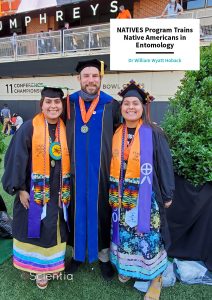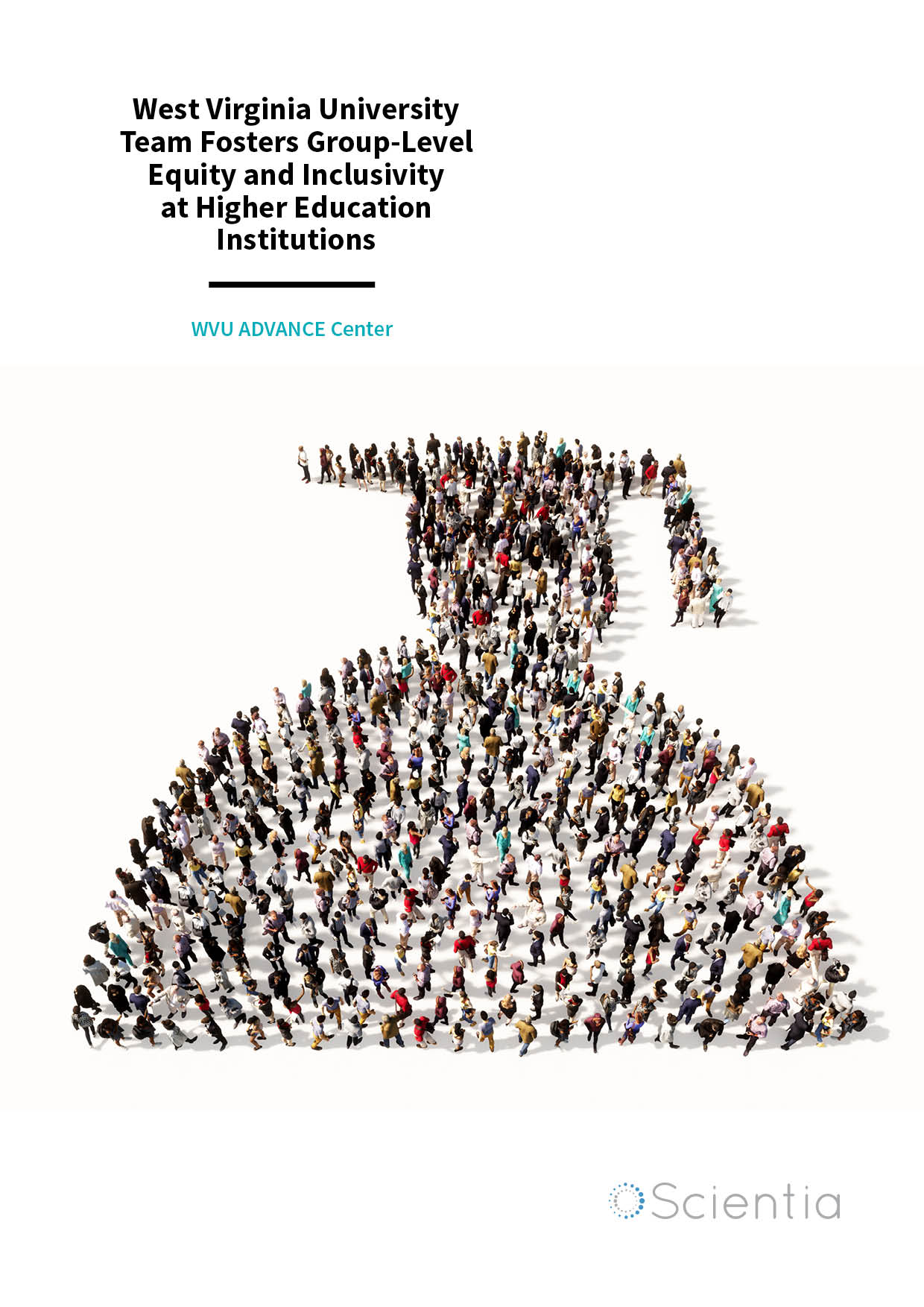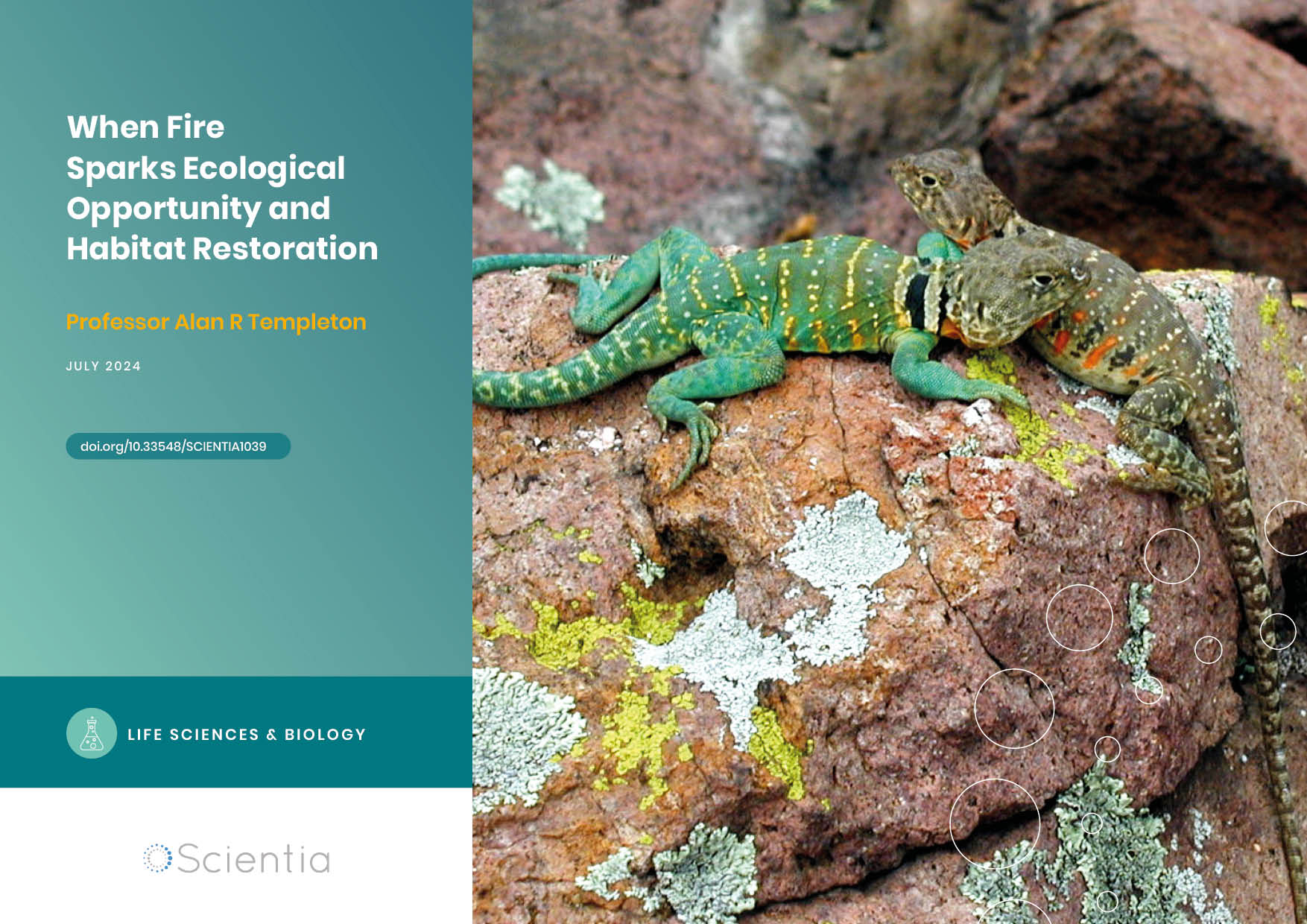Dr W. Wyatt Hoback – NATIVES Program Trains Native Americans in Entomology
Insects are the most diverse lifeform on Earth. However, entomology, the scientific study of insects, is a field with few graduates. To address rising issues in agricultural biosecurity, pest management and biodiversity preservation, we need more trained entomologists. Moreover, because insects impact the health and well-being of almost everyone, there is also a need to increase diversity and to train underrepresented groups in entomology. One such group is Native Americans. To address the lack of entomologists in this key demographic, Dr W. Wyatt Hoback and a team from Oklahoma State University pioneered a program to engage Native American undergraduate students in entomology.
The Need for Native American Entomologists
The US is home to 574 recognised, sovereign tribal nations. These nations are responsible for managing their lands and for the health and wellbeing of their citizens. In most cases, tribal nations have expressed a strong desire for self-efficacy in government, with the hope that tribal citizens obtain leadership positions, particularly within the sciences.
Despite this, Native Americans are severely underrepresented within science, technology, education, and mathematics (STEM) fields. Dr Wyatt Hoback recognised this problem at his own institution, Oklahoma State University (OSU), where Native American students represent only 6% of enrolment in the Division of Agriculture and Natural Resources, despite making up over 13% of the Oklahoma population.
In 2016, only two of 43 entomology undergraduates were Native Americans. This dearth of Native American entomology students translates to a lack of trained entomologists to manage pest insects and conserve beneficial insects on Native American lands. This is of particular concern in Oklahoma, where 39 federally recognised tribes manage nearly half of the state’s land.
The lack of Native American entomologists may explain worrying trends, such as the fact that Native American communities in Oklahoma are two to four times more likely to be infected with tick-borne diseases when compared with the population at large. Additionally, the mosquito vectors of Zika, Dengue and Chikungunya viruses have been found in Native American lands in Oklahoma. Furthermore, cattle production, a lucrative economic endeavour by most Native American nations in parts of Oklahoma, has suffered from a lack of effective pest control and conservation practices.
Thus, training Native American students in entomology in Oklahoma is an immediate need that will have direct benefits for the students, Native American communities, and the state. At a larger scale, the field of entomology is under threat. With declined interest in the field since the 1990s, there is a great need for experts to address issues in pest management, as well as to work towards the conservation of insects, which are essential to the functioning of almost all terrestrial ecosystems on Earth. Indeed, with biodiversity plummeting across the globe, particularly amongst insects, there has never been a more urgent time to recruit entomologists.
To promote entomology amongst Native American students, Dr Hoback and his colleagues at OSU and OSU’s Center for Sovereign Nations, designed and developed a program aimed at engaging Native Americans in agricultural sciences. The ‘Native Americans Trained in Various Applied Entomological Sciences’, or ‘NATIVES’, program received funding in 2016 from the US Department of Agriculture (USDA). With five graduated students as of 2021, the program and has shown promising success in engaging Native American students with entomology, empowering them to tackle emerging challenges in their communities.
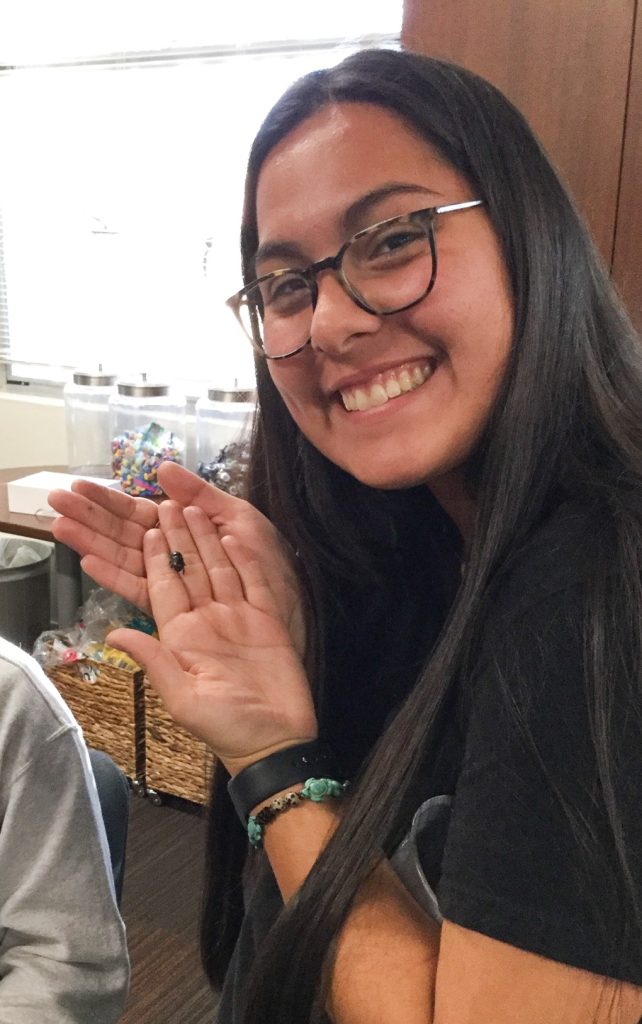
Global Entomology Problems Require Local Experts
The US is vulnerable to agricultural threats, particularly from insects that transmit diseases to human and animals. For example, outbreaks of West-Nile virus in livestock, a disease transmitted by mosquitos, resulted in serious animal welfare concerns and the loss of billions of dollars.
Of course, insects also threaten human health. For example, Lyme disease and Rocky Mountain Spotted Fever, both transmitted by ticks, are predicted to become more prevalent as global climate change lengthens the season in which ticks are active. Unfortunately, this trend is also expected for mosquito-borne diseases such as West Nile and Zika viruses. Unfortunately, the US, due to a lack of trained experts, is underprepared to manage these threats and other potential crises, such as the emergence of new insect-transmitted diseases.
A lack of recruitment of new and diverse entomologists has the potential to have severe and devastating consequences. Trained experts also must be able to collaborate and communicate across jurisdictional and cultural boundaries. This is especially true in areas that are largely managed by Native American governments, such as Oklahoma. ‘The lack of trained entomologists from diverse backgrounds exacerbates losses caused by insects because of difficulties with communication that arise from racial, cultural, and ethnic diversity,’ explains Dr Hoback. The NATIVES program is the first of its kind in the US, immersing a group of undergraduate students from diverse Native American nations into entomology and agricultural biosecurity studies.
An Emphasis on Mentorship and Service
In 2017, five Native American (Choctaw and Cherokee) students were recruited to the Entomology undergraduate major at OSU. To support these students, scholarships and training opportunities were made available every year.
‘Each class I took during my freshman and sophomore years was very interesting, and I began to realise that insects had a connection with almost everything in our ecosystem, which is very fascinating to me,’ said Bailee Posey, one of the students in the program.
In designing NATIVES, Dr Hoback and his colleagues prioritised the role of mentorship. Using the ‘cohort model’ approach, which places all the students in the same discussion-heavy courses, camaraderie was quickly built. Additionally, Dr Hoback and his colleague acted as academic and cultural advisors to the students. While Dr Hoback served as the principal academic advisor for all students, Elizabeth Payne, Director of the Center for Sovereign Nations, helped the students to integrate into university life.
‘On top of the classes, all of my entomology professors have been great teachers and mentors,’ adds Bailee. ‘Particularly, I think of the two women in the department that have inspired me as an entomologist and who I want to be as a woman in science.’
Since a large focus of the NATIVES program is allowing students to give back to their communities, there is also an emphasis on outreach and education. Students were required to complete Internships in Teaching and Outreach, which allowed students to develop teaching strategies and gave them the chance to conduct entomological outreach.
For example, as part of OSU’s ‘Insect Adventure’, the first group of NATIVES students gave entomological presentations and demonstrations to K-12 students within their own communities. Additionally, the students collaborated to lead a three-day ‘Bug Camp’ for 30 youth of the Choctaw Nation. The students also attended the Southwest branch meeting of the Entomological Society of America in Tulsa, where they helped develop stations for the ‘Insect Expo’, introducing primary school children to the roles that insects play in food production and human health.
‘The Insect Expo was a good time for me,’ said TK Wallace, one of the students in the program. ‘For one, I enjoy being around kids. Some kids don’t get the opportunity to learn about science and get the time to do it in a fun environment. So just knowing I could make a kid’s day better brings me a little bit of joy. Additionally, it was a really good networking opportunity. I had a lot of professionals in the field come up to me and complement me on my project.’
Such activities gave NATIVES students invaluable outreach experiences, while also serving to inspire children to become interested in the field of entomology.
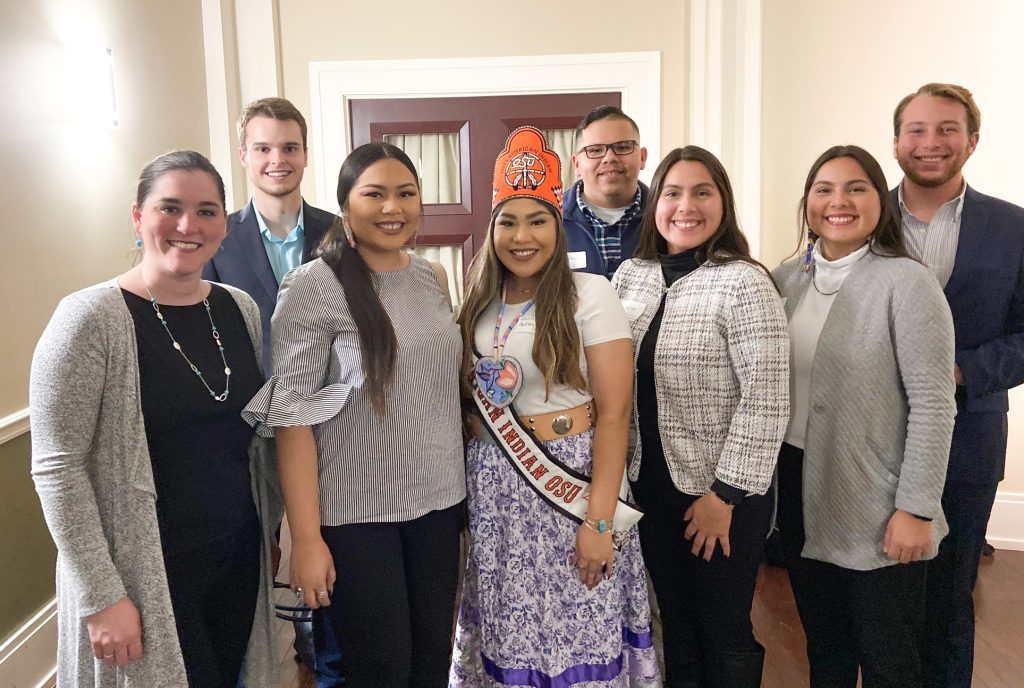
Networking in Research and Industry
As a requirement of the Entomology program, NATIVES students conducted independent research projects. The research topics were diverse, related to a variety of entomological topics such as food safety, disease pathogens, forensic entomology, and insect biodiversity. For example, one NATIVES student, Taylor Coles, analysed insect biodiversity in Oklahoma and presented her data at the annual National Entomological Society of America meeting. Another student, Alexis Coles, analysed the pathogens present in various tick species found in Oklahoma.
‘I loved all of my research projects because they all gave me more insight to what research really is,’ she said. ‘I also learned that there is still so much that needs to be tested and nothing is ever proven, just supported. Dr Wayadande was not only my research supervisor but is a mentor that I look up to and strive to achieve her positive attitude.’
The independent research projects introduced students to the entire research process, from developing a question and hypothesis to analysing data and presenting results. Consistent with the cooperative focus of NATIVES, the students engaged with each other’s research, providing valuable collaborative and professional experience. Along with presentations at relevant conferences, students had the opportunity to regularly meet with USDA representatives, Oklahoma-based conservation groups, and tribal nation leadership.
As well as developing sound research skills, the NATIVES program gives students the chance to interact with potential future employers. Students are regularly taken to visit facilities within OSU, such as the Agricultural Products Center and the School of Veterinary Medicine, and to external sites, such as livestock farms, within the state.
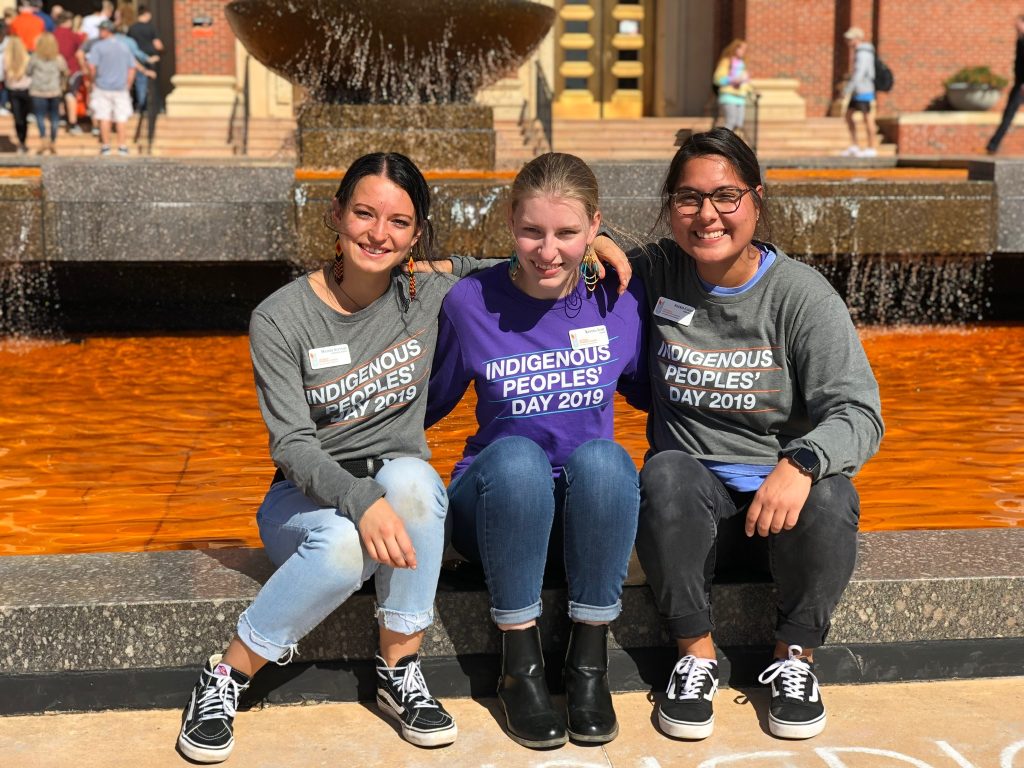
The Future of NATIVES
As of 2021, five NATIVES students have graduated from the program. Thanks to the specialised curricula, mentorship, and unique research and outreach opportunities, these Native American graduates are highly trained, scientifically competent entomologists who are well-positioned to further their careers.
Two of the students are pursuing graduate degrees in entomology, and the others are working in government or hospital positions. Given the success of the program’s first iteration, additional funding was secured to continue and grow the NATIVES program. Additionally, though the program was designed to provide training to Native Americans, it spurred renewed interest in the field, and improved the core curriculum and experiences of all students in the OSU entomology undergraduate degree program.
With more programs like NATIVES, designed to meet a specific regional need, urgent national and global issues can be addressed.
SHARE
DOWNLOAD E-BOOK
REFERENCE
https://doi.org/10.33548/SCIENTIA761
MEET THE RESEARCHER
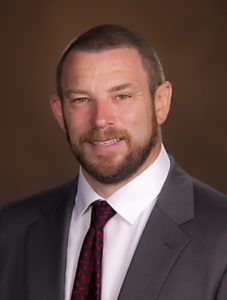
Dr William Wyatt Hoback
Department of Entomology and Plant Pathology
Oklahoma State University
Stillwater, OK
USA
Dr W. Wyatt Hoback is a passionate entomologist, who has focused on excellence in teaching and mentorship throughout his career. Since receiving his PhD in Entomology from the University of Nebraska in 1999, Dr Hoback has dedicated his career to increasing the number of students earning entomology degrees. In 2014, he accepted his current position with the Department of Entomology and Plant Pathology at Oklahoma State University (OSU), where he teaches more than 600 students each year and has mentored over 60 graduate students. He is also active in research, and has published more than 130 peer-reviewed research articles and 15 articles related to teaching. At OSU, he has worked tirelessly to spark interest in entomology, helping grow the major from twelve to nearly 80 students. In 2017, he received the Entomological Society of America’s Distinguished Teaching Award and in 2020, he was recognised with the National Excellence in Teaching and Student Engagement award from the US Department of Agriculture. Dr Hoback is the lead investigator for the successful ‘Native Americans Trained in Various Entomological Sciences (NATIVES)’ program, which engages underrepresented Native American students in entomology.
CONTACT
E: whobak@okstate.edu
W: https://experts.okstate.edu/whoback
KEY COLLABORATORS
Elizabeth Payne, JD. Director of the Center for Sovereign Nations
Dr Bruce Norden, Medical and Veterinary Entomologist, Oklahoma State University
Dr Justin Talley, Livestock Extension Entomologist, Oklahoma State University
Dr Astri Wayadande, Vector Entomologist, Assistant Director of National Institute for Microbial Forensics & Food and Agricultural Biosecurity (NIMFABB)
FUNDING
The Division of Institutional Diversity, Oklahoma State University
United States Department of Agriculture Multicultural Scholars Program
FURTHER READING
B Theis, Road Less Travelled: Native American freshmen choose an entomology adventure, STATE Magazine, 2017, 68–67.
AM Folkema, RC Holman, FS Dahlgren, JE Cheek, JH McQuiston, Epidemiology of Ehrlichiosis and Anaplasmosis among American Indians in the United States, 2000-2007, The American Journal of Tropical Medicine And Hygiene, 2012, 87, 529–537.
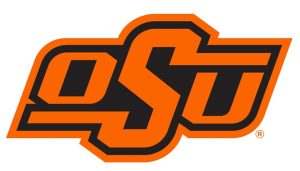
REPUBLISH OUR ARTICLES
We encourage all formats of sharing and republishing of our articles. Whether you want to host on your website, publication or blog, we welcome this. Find out more
Creative Commons Licence (CC BY 4.0)
This work is licensed under a Creative Commons Attribution 4.0 International License. 
What does this mean?
Share: You can copy and redistribute the material in any medium or format
Adapt: You can change, and build upon the material for any purpose, even commercially.
Credit: You must give appropriate credit, provide a link to the license, and indicate if changes were made.
SUBSCRIBE NOW
Follow Us
MORE ARTICLES YOU MAY LIKE
WVU ADVANCE Center | West Virginia University Team Fosters Group-Level Equity and Inclusivity at Higher Education Institutions
Despite ongoing efforts to broaden participation in the academy, many groups remain underrepresented. More needs to be done to ensure that all faculty and students succeed in institutions of higher education. The WVU ADVANCE Center is an academic hub at West Virginia University, which provides services, events, mentorship opportunities, and other initiatives that promote the sense of belonging that leads to thriving faculty and students.
Professor Alan Templeton | When Fire Sparks Ecological Opportunity and Habitat Restoration
How far would you be willing to go to save an endangered species? Would you consider burning part of a forest as a solution? As unconventional as it may sound, conservationists sometimes resort to such measures to restore lost habitats. One remarkable example is the efforts to save eastern collared lizards – and indeed the entire biological community in which they live – in the Ozarks, spearheaded by American geneticist and statistician Professor Alan Templeton of Washington University in St Louis, USA.
Dr Michael Cherney – Professor Daniel Fisher | Unlocking Woolly Mammoth Mysteries: Tusks as Hormone Time Capsules
The impressive tusks found on proboscideans (the order of mammals that includes elephants, woolly mammoths, and mastodons) are like time capsules, preserving detailed records of their bearers’ lives in the form of growth layers and chemical traces. Frozen in time for thousands of years, these layers can unlock secrets about the lives of long-extinct relatives of modern elephants. Dr Michael Cherney and Professor Daniel Fisher from the University of Michigan used innovative techniques to extract and analyse steroid hormones preserved in woolly mammoth tusks. This ground-breaking work opens new avenues for exploring the biology and behaviour of extinct species.
Dr Anushia Inthiran | Distance Learning: Impacts for Offshore Students Amid COVID-19
The COVID-19 pandemic significantly disrupted global education and necessitated a shift to online learning. Due to ongoing border closures, even after the pandemic eased, offshore students were prevented from attending their university in person long after their local peers, impacting their learning ability and future perspectives. Dr Anushia Inthiran from the University of Canterbury conducted a survey among a group of offshore students to understand the consequences of distance learning on their education.

